Uncover India’s Cultural Heritage: The Story Of The Taj Mahal
Nestled on the banks of the serene Yamuna River in Agra, India, stands a testament to timeless love and architectural brilliance — the majestic Taj Mahal. This UNESCO World Heritage site is more than just a marble mausoleum; it embodies the rich history and cultural tapestry of India. As the sun rises over its iconic white domes, the Taj Mahal casts a mesmerizing reflection on the still waters, captivating millions of hearts from around the globe.
India
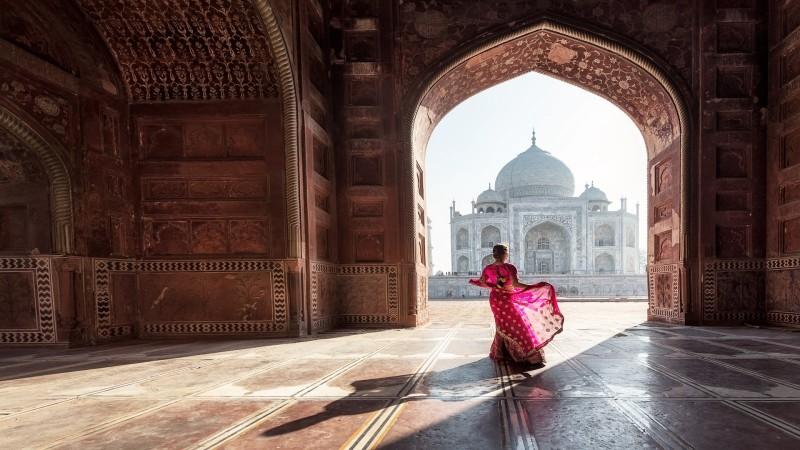
Historical Background
The Taj Mahal, commissioned in 1631 by the Mughal Emperor Shah Jahan in memory of his beloved wife Mumtaz Mahal, is a pinnacle of Mughal architecture. Its construction spanned over two decades, employing thousands of artisans and craftsmen who meticulously carved intricate designs and inlaid precious stones into its marble façade. Designed by architect Ustad Ahmad Lahauri, the Taj Mahal blends Persian, Islamic, and Indian architectural styles, showcasing a harmonious fusion of artistic traditions.
This architectural marvel not only symbolizes eternal love but also serves as a historical chronicle of the Mughal Empire's zenith. Its symmetrical gardens, reflecting pools, and meticulously crafted calligraphy recount tales of devotion and craftsmanship unparalleled in history. The Taj Mahal's enduring fascination stems not just from its structural majesty, but also from the timeless love story that inspired its construction.
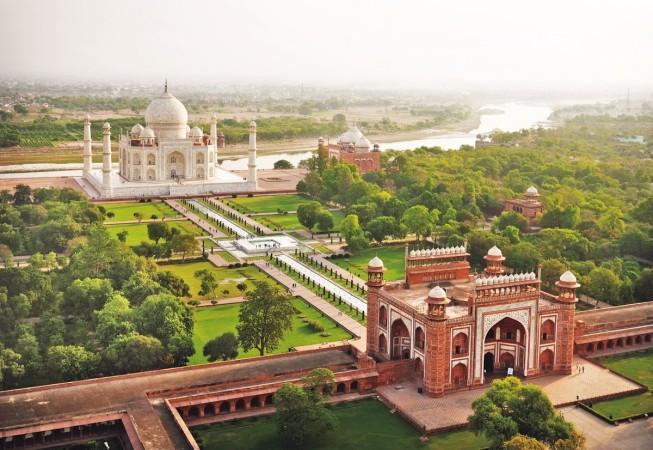
Taj Mahal Panorama - © VTC News
Taj Mahal Unique Architecture
UNESCO renowned The Taj Mahal as a World Heritage site for its exquisite and unique architecture, blending elements from various architectural styles into a harmonious masterpiece. Built entirely of white marble sourced from Makrana in Rajasthan, India, its symmetrical design reflects the perfect balance and precision characteristic of Mughal architecture.
Key architectural features include:
- Central Dome: The central dome of the Taj Mahal is perhaps its most iconic feature, soaring to a height of 73 meters (240 feet) above the mausoleum. It is flanked by four smaller domes, creating a celestial-like appearance that symbolizes the heavens.
- Minarets: Four minarets flank the main mausoleum, standing at each corner of the plinth. These slender towers are not just decorative but also serve a structural purpose, designed to withstand seismic activity while enhancing the visual symmetry of the monument.
- Inlay Work: Intricate inlay work adorns the façades of the Taj Mahal, featuring semiprecious stones such as jasper, jade, turquoise, lapis lazuli, and mother-of-pearl. These stones are meticulously carved and set into the marble in intricate floral and geometric patterns, known as pietra dura, adding depth and shimmering beauty to the monument.
- Calligraphy: Arabic calligraphy from the Quran embellishes the exterior of the Taj Mahal, particularly around the entrance archways and on the cenotaphs inside. The inscriptions are inlaid with black marble, creating a striking contrast against the white marble background while conveying spiritual messages.
The Taj Mahal's architectural brilliance lies not just in its aesthetic appeal but in the engineering ingenuity that supports its enduring structure. Its design reflects a fusion of Persian, Islamic, Turkish, and Indian architectural styles, showcasing the cultural synthesis and artistic prowess of the Mughal Empire under Emperor Shah Jahan.
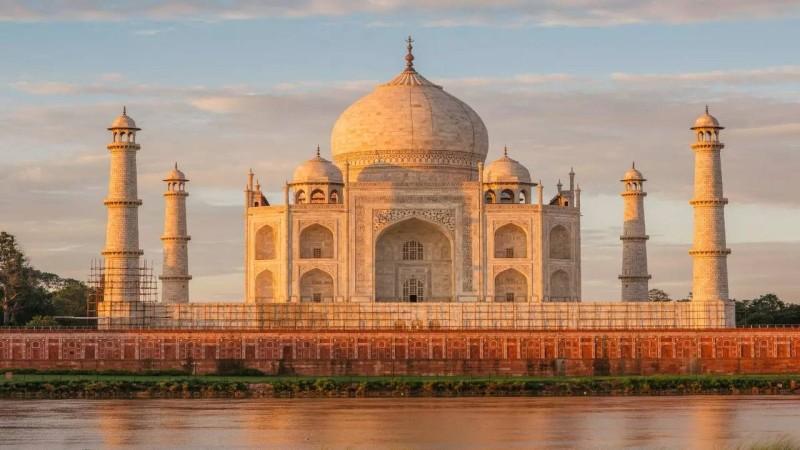
Sunset in Taj Mahal - © Quang Ninh News
Cultural Significance of The Taj Mahal
Beyond its architectural grandeur, the Taj Mahal holds profound cultural significance for India and the world. Recognized as one of the New Seven Wonders of the World, it draws millions of visitors annually, each seeking to witness its ethereal beauty firsthand. The mausoleum's shimmering white marble changes hues throughout the day, reflecting different moods with the shifting sunlight, a spectacle that continues to awe spectators centuries after its completion.
Local legends and folklore add layers of mystique to the Taj Mahal's narrative, recounting tales of Shah Jahan's grief and the enduring love story that inspired its construction. The site's designation as a UNESCO World Heritage site underscores its universal value, preserving not just a monument but a cultural symbol of India that transcends borders and generations.

Marvelous architecture of Taj Mahal - © Dan Viet News
Attractions Around the Taj Mahal
While the Taj Mahal is undeniably the star attraction of Agra, the city offers a myriad of experiences that complement its grandeur and historical significance.
1. Agra Fort
Agra Fort, located about 2.5 kilometers northwest of the Taj Mahal, is a symbol of the Mughal Empire's supremacy. This UNESCO World Heritage monument, built mostly of red sandstone, was constructed by Emperor Akbar in 1565 and served as the primary home of the Mughal Dynasty's monarchs until 1638. Its imposing walls encompass an impressive array of palaces, mosques, and halls, each reflecting the architectural finesse and cultural richness of the Mughal era.
Within Agra Fort, notable highlights include:
- Diwan-i-Aam (Hall of Public Audience): Where the emperor would meet his subjects and address public issues.
- Diwan-i-Khas (Hall of Private Audience): Reserved for private audiences with dignitaries and courtiers, featuring the famous Peacock Throne.
- Moti Masjid (Pearl Mosque): A pristine white marble mosque built by Shah Jahan for private prayers.
A visit to Agra Fort offers not only a glimpse into Mughal grandeur but also panoramic views of the Taj Mahal from its ramparts, providing a perspective on the historical and architectural interplay between these two iconic landmarks.
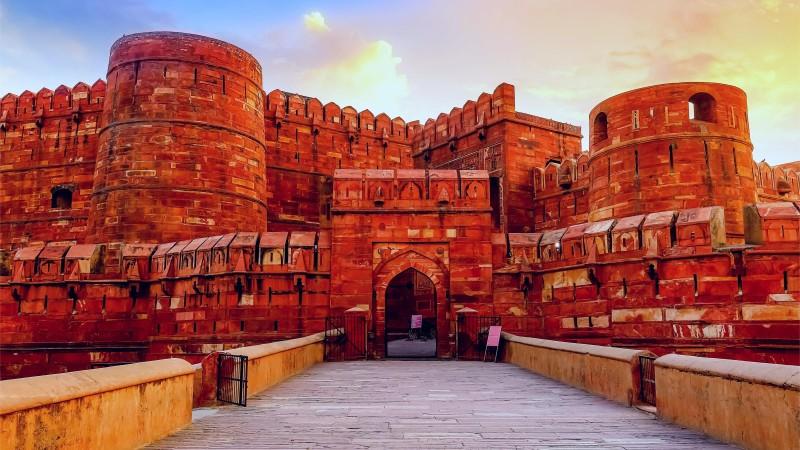
Agra Fort - © iStock
2. Mehtab Bagh
Mehtab Bagh, located across the Yamuna River from the Taj Mahal, is a symmetrical garden complex known as the "Moonlight Garden." It was originally constructed as part of a sequence of 11 gardens bordering the Yamuna's east bank, providing unbroken views of the Taj Mahal throughout the day. It is particularly renowned for its stunning sunset views, when the setting sun casts a golden hue on the Taj Mahal's marble façade, creating a mesmerizing spectacle.
Mehtab Bagh also houses the remnants of what is believed to have been a black marble platform, identified by archaeologists as the site where Emperor Shah Jahan originally intended to build a black marble mausoleum for himself, mirroring the Taj Mahal's white marble beauty.
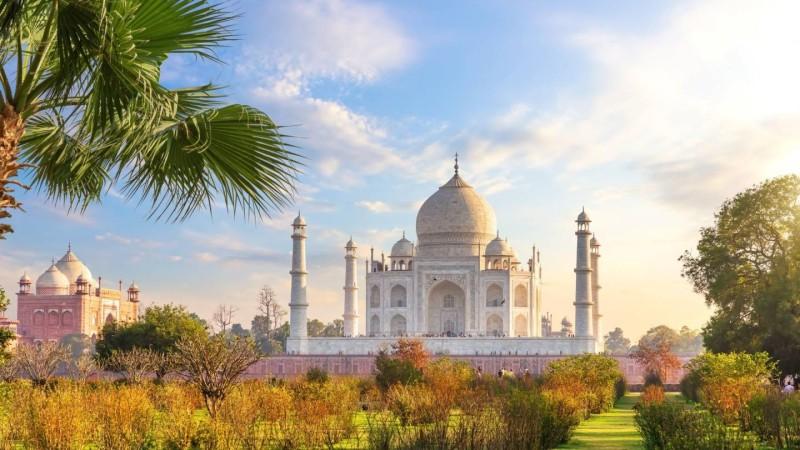
Mehtab Bagh - © gather
3. Local Bazaars
No visit to Agra is complete without exploring its bustling local bazaars, where centuries-old traditions blend seamlessly with modern commerce. Agra's markets are renowned for their exquisite handicrafts, leather goods, and traditional Indian attire, offering a glimpse into the city's vibrant cultural heritage and craftsmanship.
Kinari Bazaar and Sadar Bazaar are among the most popular shopping destinations in Agra:
- Kinari Bazaar: Famous for its intricately designed embroidery and embellishments, often used in traditional Indian weddings and festivals. You can browse through a kaleidoscope of vibrant fabrics, sarees, and embroidered textiles, each telling a story of Agra's rich artisanal legacy.
- Sadar Bazaar: Known for its diverse range of handicrafts, leather products, and marble souvenirs. Here, artisans skillfully craft marble replicas of the Taj Mahal and other iconic monuments, offering visitors a chance to take home a piece of Agra's architectural splendor.
Exploring these bazaars is not just a shopping experience but a cultural immersion, where the sights, sounds, and aromas of Agra come alive, reflecting its dynamic blend of tradition and modernity.
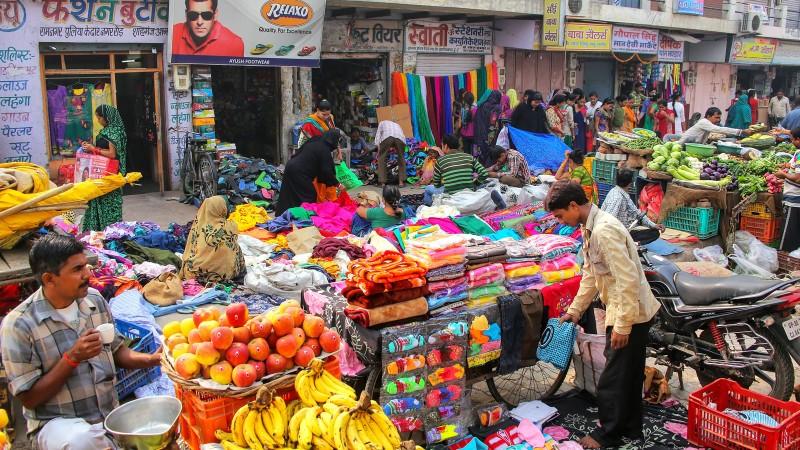
Local Bazaars - © Shutterstock
Visiting Experience in the Taj Mahal
Visiting the Taj Mahal is a journey into India's cultural soul, requiring careful planning to fully appreciate its beauty and historical significance. Start your day early to witness the mausoleum bathed in the soft hues of dawn, a time when crowds are sparse and the atmosphere serene. As you approach the Taj Mahal through its grand South Gate, prepare to be awe-struck by its symmetrical gardens and reflective pools that mirror its ethereal beauty.
Inside, the main mausoleum houses the cenotaphs of Shah Jahan and Mumtaz Mahal, adorned with intricate marble carvings and semi-precious stones that shimmer under natural light. For photography enthusiasts, different viewpoints around the Taj Mahal offer unique perspectives throughout the day. Whether capturing the play of light and shadow at sunrise or the golden hues of sunset, each moment offers a new facet of its timeless allure.
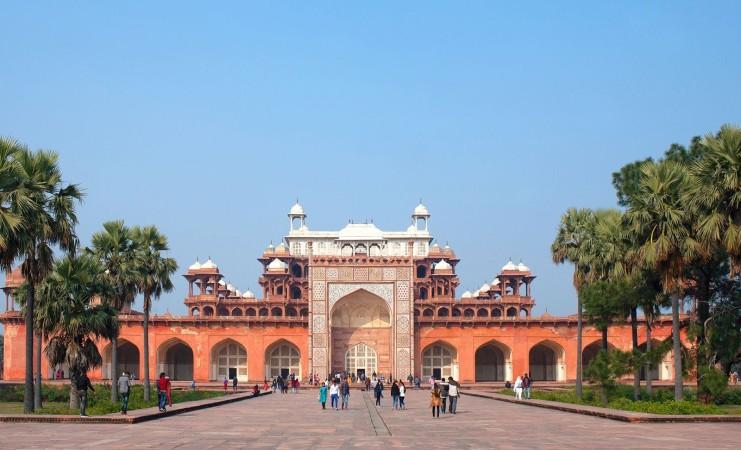
Akbar's Mausoleum - © Britannica
Conclusion
In conclusion, the Taj Mahal stands not just as a monument to love but as a testament to human creativity and devotion. Its architectural brilliance and cultural significance continue to inspire awe and admiration, drawing visitors from across the globe to experience its unparalleled beauty. Plan your visit to the Taj Mahal with care, embracing its historical narrative and the rich tapestry of attractions that surround it in Agra.
From the grandeur of Agra Fort to the tranquility of Mehtab Bagh and the bustling markets of Kinari Bazaar, each experience adds depth to your journey through India's cultural heartland. As you bid farewell to the Taj Mahal, carry with you the memories of its pristine marble façade and the enduring legacy of Shah Jahan's love for Mumtaz Mahal. It's a journey that transcends time, leaving an indelible mark on all who have the privilege to behold its splendor.
Articles for you

Experience Aboard The RV Indochine II - A Mekong Cruise With Tweet World Travel
The RV Indochine II is a luxury river cruise ship, offering an unforgettable journey through many attractions along the Mekong River. Built in 2017, this upscale vessel combines colonial elegance with modern conveniences to create a comfortable yet stylish environment for its crew and passengers. The ship’s intimate size makes it ideal for those seeking a more personal cruising experience while exploring Vietnam and Cambodia rich culture, scenery, and heritage. Whether you're gazing at the landscape from your private balcony or enjoying authentic local cuisine, RV Indochine II promises an exotic adventure like no other.

Witness Stilt Fishing In Sri Lanka: An Eco-Tourism Experience
Sri Lanka, renowned for its stunning beaches and rich cultural heritage, harbors a unique tradition that has captivated travelers for centuries: stilt fishing. This ancient practice, passed down through generations of coastal communities, blends artistry with necessity, offering a glimpse into a way of life intimately connected to the island's coastal rhythms. Stilt fishing in Sri Lanka isn't merely a means to catch fish; it's a cultural emblem, embodying the resilience and ingenuity of Sri Lanka's fishing communities.

Make Your Trip Stress-Free With The Tweet Trip App
Embark on your next adventure with confidence by downloading the Tweet Trip App, available for both iOS and Android. This essential travel companion allows you to view your detailed itinerary, stay connected with your tour guide and fellow travelers, receive real-time updates, and provide feedback effortlessly. With features like in-app messaging, emergency assistance, and location sharing, the Tweet Trip App ensures you travel smarter, stay connected, and enjoy a seamless, worry-free journey. Get started today and make the most of your travel experience with Tweet World Travel.

Pedal Through Paradise: Unveiling Cambodia's Hidden Gems on Two Wheels
The gentle whir of bicycle wheels mingles with the distant chants of monks as you glide past emerald rice paddies stretching to the horizon. This is Cambodia - a sensory explosion waiting to be experienced on two wheels. At Tweet Tours, we believe there's no better way to immerse yourself in the Kingdom of Wonder than by bicycle.
Cambodia isn't just a destination; it's a living, breathing tapestry of ancient wonders, natural beauty, and vibrant culture. Our carefully crafted cycling tours take you beyond the typical tourist haunts, offering a unique perspective on this captivating country. Ready to clip in and discover the magic of Cambodia? Let's ride!

Trekking in the Himalayas: A Journey Through Nepal's Majestic Peaks
The Himalayas rise from the earth like colossal guardians, their snow-capped peaks piercing the sky in a display of nature's raw power and beauty. Nepal, nestled at the heart of this mountain range, serves as the gateway to some of the most breathtaking trekking experiences on the planet. Here, the air is crisp and thin, filled with the promise of adventure and the whispers of ancient tales.
With Tweet Tours, as you set foot on these hallowed trails, you're not just a traveler - you're a modern-day explorer, following in the footsteps of legendary mountaineers and age-old traders. Each step takes you further into a world where nature reigns supreme and human resilience is tested against the backdrop of some of the world's highest peaks.
From the moment your boots touch the ground in Kathmandu, you'll feel the pull of the mountains. The bustling streets of the capital, with their sensory overload of sights, sounds, and smells, soon give way to serene mountain paths where the only soundtrack is the crunch of gravel underfoot and the distant tinkling of yak bells.

Exploring Mui Ne's Wonders: Unique Attractions & Local Dishes
Nestled along the southeastern coast of Vietnam, Mui Ne emerges as a captivating gem, blending natural wonders with cultural richness. Renowned for its stunning landscapes and unique attractions, Mui Ne beckons travelers seeking both relaxation and adventure in equal measure. Mui Ne's renowned beach dunes, bustling fishing towns, and excellent local food await exploration at every turn.
The allure of Mui Ne lies not only in its pristine beaches and crystal-clear waters but also in its diverse range of activities catering to every traveler's whims. Whether you're drawn to thrilling water sports like kitesurfing and windsurfing on its dynamic shores or seeking tranquility amidst the picturesque Fairy Stream, Mui Ne promises an unforgettable journey filled with discovery.
